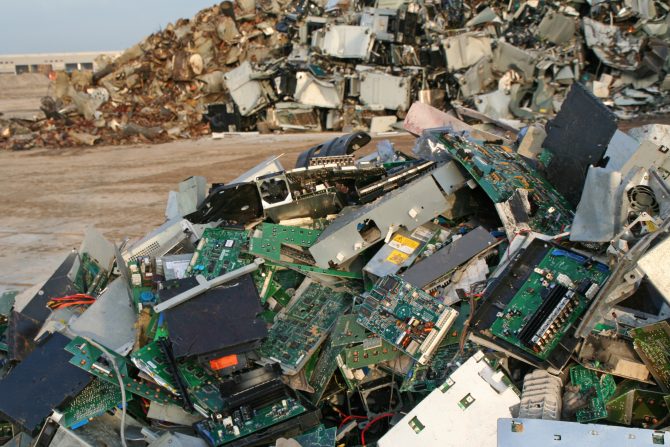
Electronics underpins our lives. It’s important we protect the chain
By Dan Lionello, chief executive officer & co-founder of Omnae Technologies Inc.
Electronics Supply Chain Electronics environmental supply ChainThe smallest technologies have the longest supply chain stories
Every minute of every day we’re impacted by electronics. They’re in what we wear, how we manage our day-to-day and even how we work. Electronics aren’t just ‘nice to have’ luxuries anymore – they’re deeply embedded in our lives from the moment we start our day.
The most seemingly simple or smallest technology innovations can often have the most interesting supply chain stories. Digital technologies that help us to organize and better control our supply chains are more important than ever to maintain production quality and minimize disruptions.
Electronics manufacturers work within a uniquely complex supply chain environment which poses many societal, political and economic challenges. Experts agree that, “flexibility and adaptability have become critical attributes for all players in the electronics supply chain. In addition, suppliers, fulfillment centre operators, carriers, retailers, and others increasingly need to speak up.” Protecting the integrity of these vital supply chains from top to bottom is imperative to the growth and advancement of electronics and technology innovations.
Maintaining supplier relationships for quality control
Did you know that consumer and industrial businesses lose approximately USD$250 billion each year due to counterfeit parts? Not only does this have serious implications to a company’s bottom line, but faulty imitation components can lead to reduced productivity and damaged reputations. 
Companies heavily rely on technology tools such as blockchain records to trace components and identify fake parts, but maintaining supplier relationships should be the first step to mitigate the distribution of counterfeits. Not surprisingly, over 80% of electronics executives responded to a recent survey indicating they expect their organizations to reinvent their operations in 2022 with technologies such as IoT, blockchain and robotic process automation.
Supply chain experts agree that technology tools and visibility are vital, as “… enabling holistic, automated data aggregation not just within a factory but across multiple facilities in a supply chain, unified systems like manufacturing optimization platforms can create a ‘digital thread’ of data representing a product’s supply chain journey, and consequently power collaboration between across many parties through real-time access to the same, actionable information.”
Collecting robust data to inform manufacturing leaders about production, inventory and purchases will allow all partners full visibility of the chain to make smarter decisions. Setting the benchmark for quality standards will reduce the risk of counterfeiting through collaboration and transparency. Moving forward, “bad actors” and vendor vetting technology tools will become even more critical to maintain quality of final outputs and mitigate lost revenues.

Source: Getty Images
Protecting the environment and working within regulations
According to the World Economic Forum, each year over 50-million tons of electronic waste is produced. Of that, only 20% is recycled. Not only does this pose significant dangers to our environment, but it also represents a missed opportunity in raw material value. In fact, the volume of gold in one ton of mobile phones is more than 100 times the amount in one ton of gold ore.
There are plenty of organizations and initiatives that manufacturers can join to support reuse and resale initiatives. These recycling programs help companies regulate their activities under international waste trade laws as well as consumer data privacy requirements. As an alternative, manufacturers can also consider reprocessing and donating working electronics to organizations that can put them to good use including libraries, homeless shelters and local nonprofits.
Maintaining visibility of your vendors, and knowing that your partners in the supply chain work within environmental regulations, helps your business do their part in protecting our planet while delivering cutting edge technologies with responsibly sourced components.
Adaptations to crises in manufacturing epicentres
“2020 was a challenging year of broken supply chains, unexpected line downs, missed targets, and logistics headaches. Everything moved slower and cost more in 2020, and a lot of leaders scrambled just to keep up,” says Forbes.
As we worked (and still continue to struggle) with managing the COVID-19 pandemic, electronics manufacturers felt the impacts on business operations earlier than most. As China is a major exporter of electronic components, early factory shutdowns and government-mandated quarantines halted international shipments in the early winter of 2020.
Today, factories are still working with reduced workforces to accommodate social distancing measures and the effects of supply chain shortages and slowdowns are still being addressed. Public health restrictions imposed in the United States and across Europe have only contributed to the exponential increase in supply chain impacts. Analyzing how government leaders responded to increasing infection rates and the variety of tactics used to lock down populations should help supply chain leaders predict and proactively reduce future operational impacts and sourcing efforts.
Working through geopolitical turmoil
From rising tensions between governments, to increasing international tariffs and even part shortages due to changing political leaders, the electronics manufacturing industry has been anxiously trying to prepare for what the future may hold. While some companies have passed tariff costs onto their customers, others are taking a bolder stance and moving manufacturing onshore and out of turbulent areas.
According to experts, “before they begin working with a supplier, many electronics companies must validate the quality and reliability of the supplier’s operations and the products they’re providing—a process that can take months.” As a conservative estimate, setting up manufacturing operations in a new country can take at least two to five years of serious financial planning. Not to mention that the upfront investment needed to move factories won’t produce a newer, better or higher quality product than they already manufacture.
Overcoming electronics supply chain challenges
Any of these issues, let alone all of them at once, will have drastic and long-term effects on every supply chain. Once leaders can analyze learnings and data gained throughout the last year, they’ll be in an optimal position to take control of the situation and create proactive strategies to get ahead of upcoming trends and issues.
“Better connected data tools, which Industry 4.0 technologies supply, help drive the cultural shift in relationships toward transparency by providing an objective, shareable record of what’s happening. This added transparency means both sides can quickly agree on the reality of a situation and move on to fixing them,” says Forbes.
Protecting the supply chain won’t be a quick or easy process, but it’s necessary. The more that supply chain partners can collaborate and work together to overcome these challenges as a whole will increase agility, stability and ethical manufacturing practices across the globe.
———————————-
About the author
Dan Lionello is the chief executive officer and co-founder of Omnae Technologies Inc., a collaborative cloud-based Supply Chain Management (SCM) platform that empowers businesses to organize their supply chains, simplify their processes, and continuously improve product quality.
